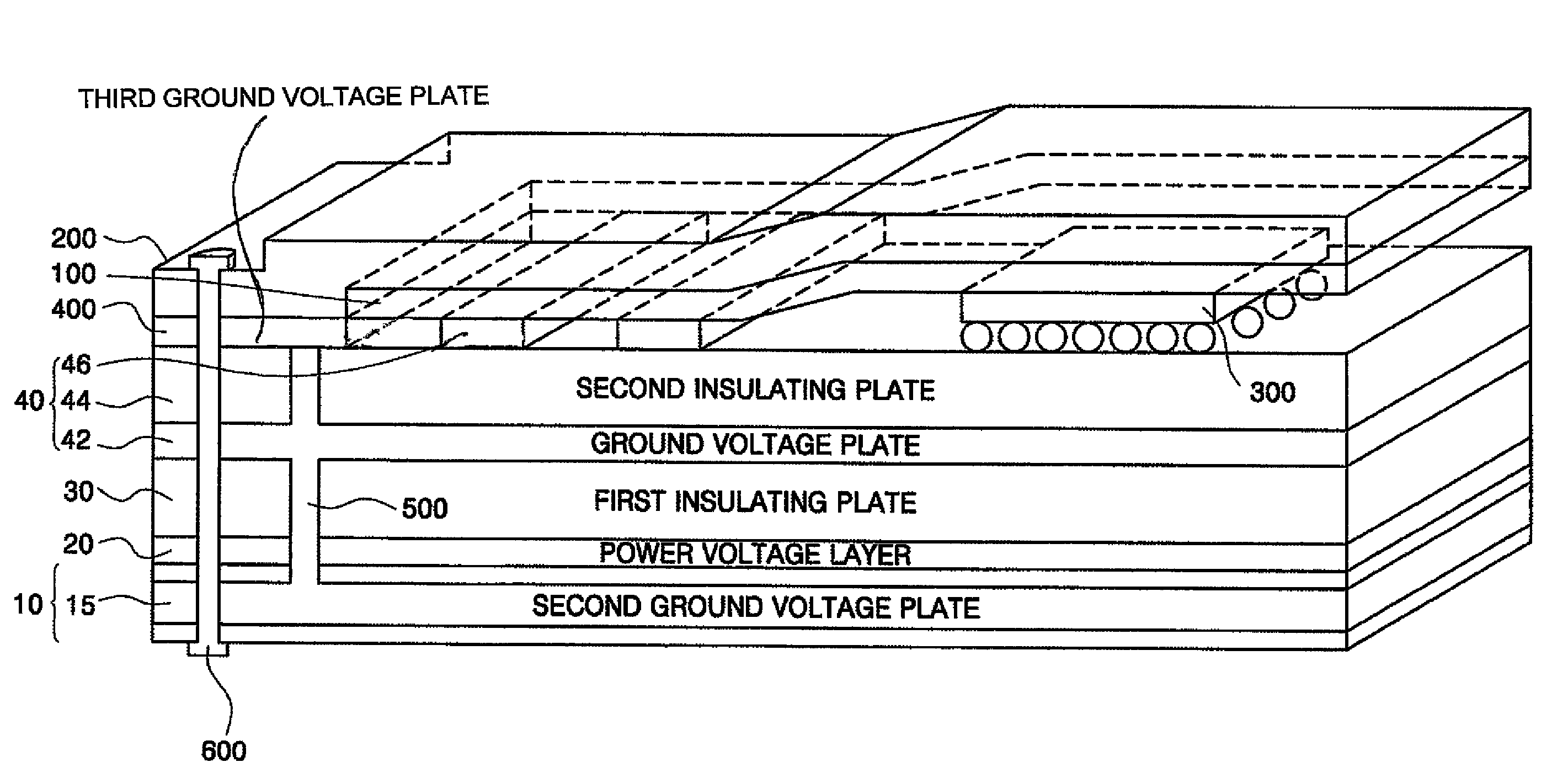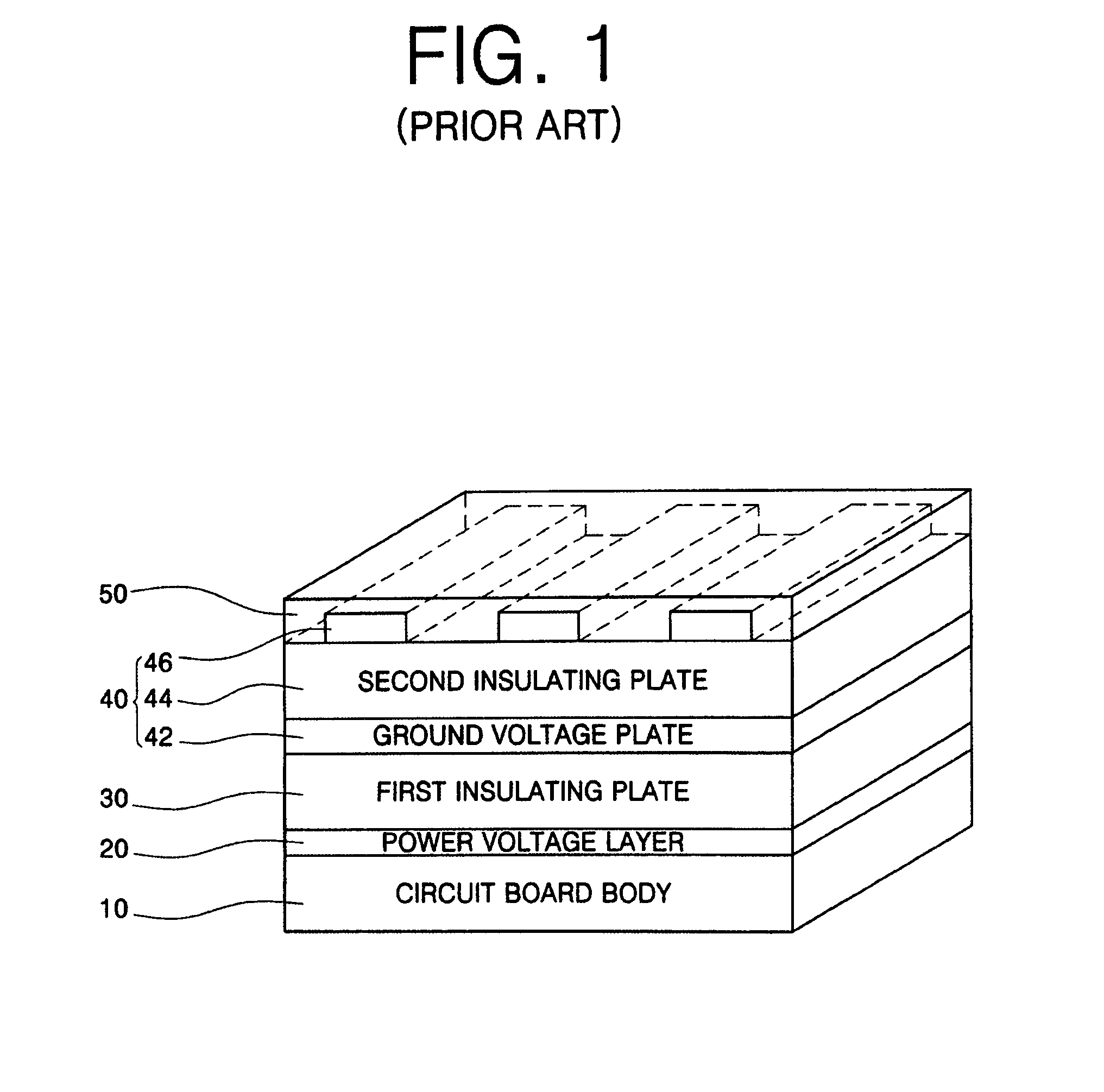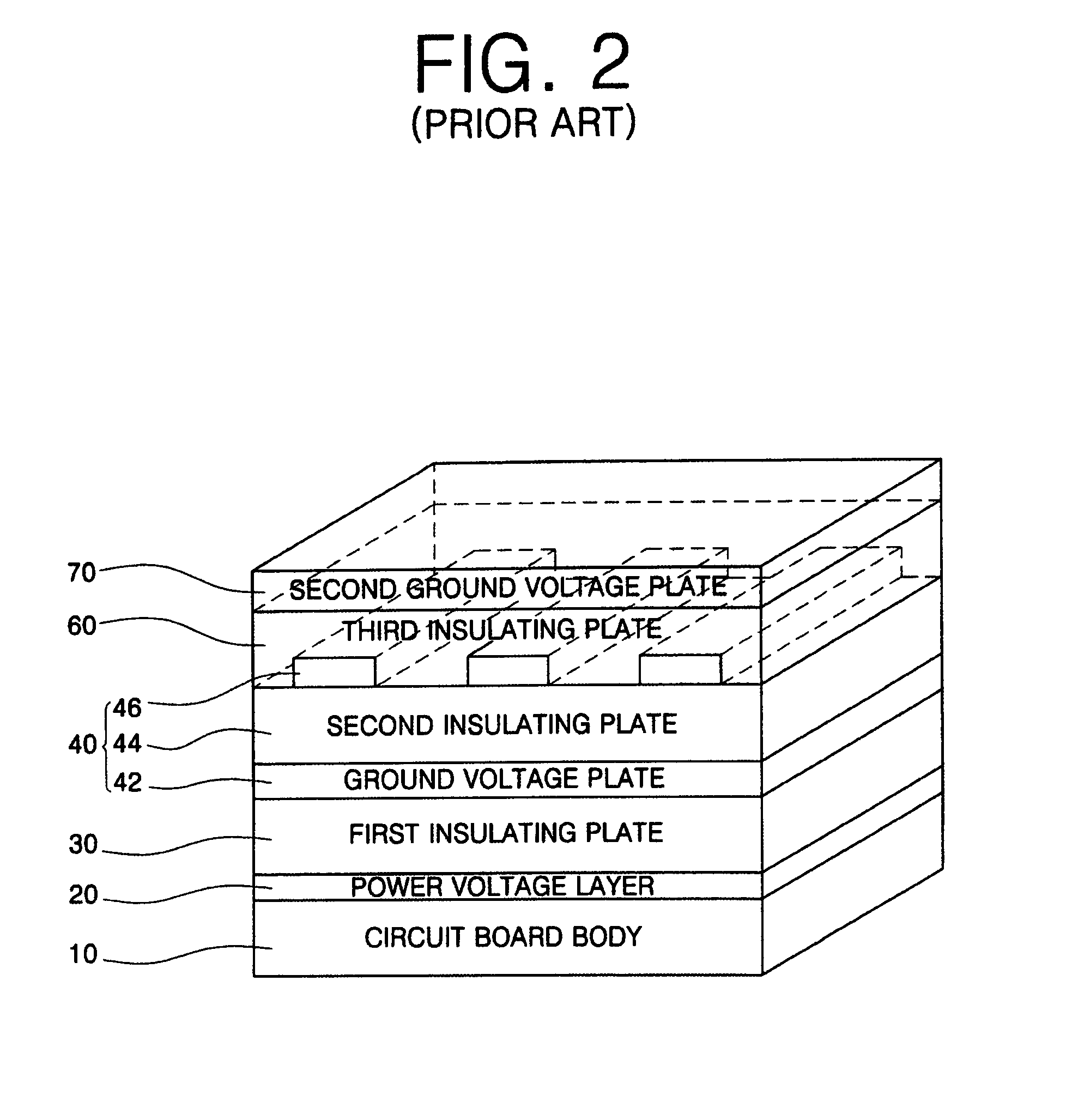Multi-layered printed circuit board
a printed circuit board and multi-layer technology, applied in the direction of cross-talk/noise/interference reduction, electrical apparatus construction details, circuit electrostatic discharge protection, etc., can solve the problems of increasing the complexity of the circuitry of the electronic device, the interference between signals transmitted through the wires, and the errors that occur in the circuitry. to achieve the effect of suppressing electromagnetic interference and dissipating hea
- Summary
- Abstract
- Description
- Claims
- Application Information
AI Technical Summary
Benefits of technology
Problems solved by technology
Method used
Image
Examples
first embodiment
[0043]Referring to FIG. 3, a multi-layered PCB according to the present invention comprises a circuit board body 10, a power voltage layer 20, a first insulating plate 30, a multi-layered substrate 40, thermal interface material 100, and a heat sink 200 attached to the thermal interface material 100. The multi-layered substrate 40 comprises a ground voltage plate 42, a second insulating plate 44, and a plurality of signal lines 46. Three signal lines 46 are shown in FIG. 3 for clarity, but four or more signal lines can extend over the circuit substrate. Also, vias connect the circuit patterns on the various layers to each other.
[0044]The circuit board body 10, the power voltage layer 20, the first insulating plate 30, and the multi-layered substrate 40 (ground voltage layer 42, the second insulating plate 44 and the signal lines 46) are similar to those of FIG. 1. Thus, these elements will not be described in further detail for the sake of brevity.
[0045]The heat sink 200 preferably ...
second embodiment
[0050]FIG. 4 illustrates a multi-layered PCB according to the present invention. The multi-layered PCB of FIG. 4 comprises a circuit board body 10, a power voltage layer 20, a first insulating plate 30, a multi-layered substrate 40, a plurality of active electronic elements 300, thermal interface material 100, and a heat sink 200. The multi-layered substrate 40 comprises a ground voltage plate 42, a second insulating plate 44, and a plurality of signal lines 46.
[0051]The circuit board body 10, the power voltage layer 20, the first insulating plate 30, the multi-layered substrate 40, the thermal interface material 100, and the heat sink 200 are similar to those of the embodiment of FIG. 3. Thus, these elements will not be described in further detail for the sake of brevity. Also, three signal lines 46 and a single active element 300 are shown in FIG. 4 for the sake of clarity, but the PCB of the embodiment of FIG. 4 may have four or more signal lines 46 and has two or more active ele...
third embodiment
[0056]FIG. 5 illustrates a multi-layered PCB according to the present invention. The multi-layered PCB of FIG. 5 comprises a circuit board body 10, a power voltage layer 20, a first insulating plate 30, a multi-layered substrate 40, a plurality of active elements 300, thermal interface material 100, a heat sink 200, a third ground voltage plate 400, a clip 600, and a via 500 the multi-layered substrate 40 comprises a first ground voltage plate 42, a second insulating plate 44, and a plurality of signal lines 46. Although three signal lines 46 and a single active element 300 are shown in FIG. 5, the PCB may have four or more signal lines 46 and has two or more active elements 300. The thermal interface material 100 may bond the heat sink 200 to the signal lines and / or to the active elements 300. Also, the PCB has other vias connecting the circuit patterns on the various layers to each other.
[0057]The power voltage layer 20, the first insulating plate 30, the multi-layered substrate 4...
PUM
 Login to View More
Login to View More Abstract
Description
Claims
Application Information
 Login to View More
Login to View More - R&D
- Intellectual Property
- Life Sciences
- Materials
- Tech Scout
- Unparalleled Data Quality
- Higher Quality Content
- 60% Fewer Hallucinations
Browse by: Latest US Patents, China's latest patents, Technical Efficacy Thesaurus, Application Domain, Technology Topic, Popular Technical Reports.
© 2025 PatSnap. All rights reserved.Legal|Privacy policy|Modern Slavery Act Transparency Statement|Sitemap|About US| Contact US: help@patsnap.com



